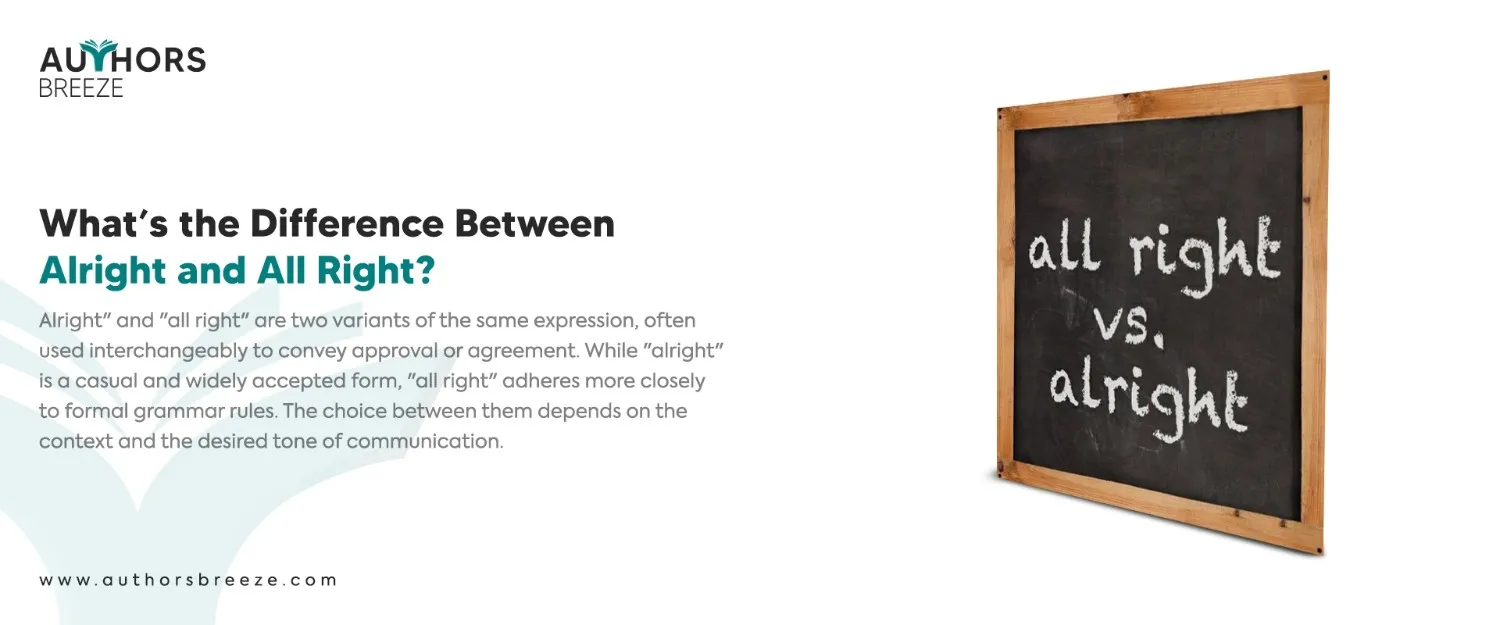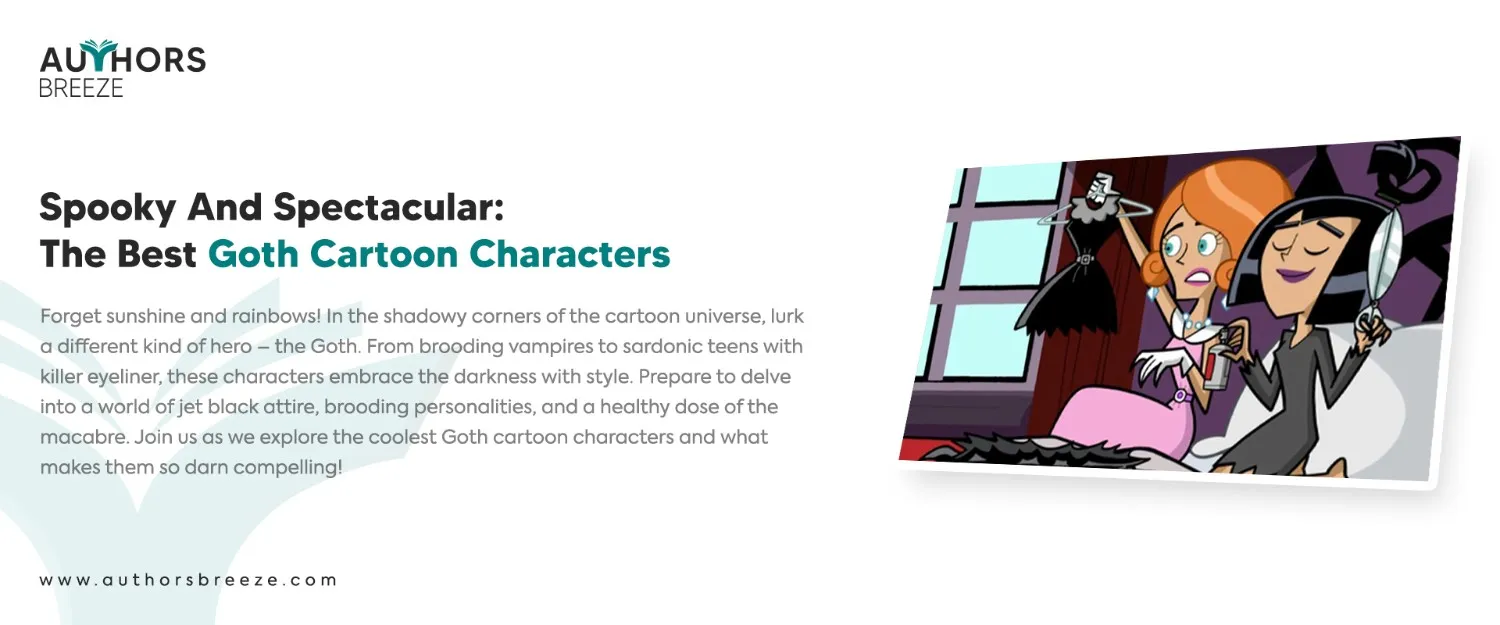Key Takeaways: The Difference between Alright vs All Right
- “All right” is the traditional as well as standard form historically accepted in formal writing.
- “Alright” is a more modern contraction. It has faced controversy over its legitimacy, but now people are accepting it in informal contexts.
- Both terms indicate something is satisfactory, acceptable, or okay, but their usage can depend on the formality of the context.
- “All right” is versatile, serving as an adjective, adverb, interjection, or for agreement and reassurance.
- The choice between “all right” and “alright” may also depend on the audience’s expectations and regional language variations.
- Language evolves, and “alright” is gaining acceptance in more contexts, though “all right” remains the more universally accepted form in formal writing.
Compose A Flawless Ebook
Choose Authors Breeze for error-free writing and elevate your ebook above the rest, particularly with tricky words such as “alright and all right.”
Introduction to Alright vs All Right Debate
[The biggest difference between all right and alright is that one (all right) is a commonly used phrase that’s been accepted by dictionaries and grammar stylebooks for ages, while the other (alright) technically isn’t, well, a word” – Brian A. Klems”]
The debate between “alright vs all right” has perplexed writers and grammarians for decades. Both variants convey the sense of being satisfactory or acceptable. Yet, their usage often stirs a bit of controversy in formal and informal writing.
Historically, “all right” has been the standard form, rooted in English for centuries. The term signifies that everything is in a satisfactory condition. The contraction “alright” emerged more recently and sparked debates on its legitimacy. While traditionalists are unwilling to accept “alright,” various dictionaries and style guides now recognize it, especially in informal contexts.
Alright Definition: What Does Alright Mean?
Alright Meaning: “Alright” is a word in English to signify something is satisfactory, acceptable, or okay. You can use it in various contexts, such as:
- To express agreement,
- To indicate that something is okay,
- Or to reassure someone that a situation is under control.
The term is less formal than “all right,” which has the same meaning. Still, people use both versions in everyday language.
The usage of “alright vs all right” is a matter of stylistic preference or adherence to specific style guides. Some people argue that “alright” is not entirely proper English. However, “alright” is now increasingly common in informal communication. In addition, people generally understand and accept it.
In summary, “alright” means:
1- Satisfactory but not exceptionally or especially good, for example:
“The movie was alright.”
2- Safe or well, for example:
“Are you alright?”
3- In a satisfactory manner or to a fair extent, for example:
“It worked out alright in the end.”
Its usage reflects the speaker’s or writer’s acknowledgment of a situation’s acceptability without necessarily implying enthusiasm or excellence.
All Right Definition: What Does All Right Mean?
All Right Meaning: “All right” is a phrase in English that generally means satisfactory, acceptable, or correct. You can utilize it in various contexts, such as:
- An adjective, adverb, or interjection.
- To express agreement, approval, or that something is adequate or in a satisfactory condition.
When it comes to “alright vs all right,” “all right” is a more grammatically correct form. However, people widely use and understand both expressions. Here are the primary uses and meanings of “all right”:
Adjective
As an adjective, “all right” indicates that something is satisfactory, in good order, or acceptable. For example:
“The answers you provided are all right.”
Adverb
You can describe something done satisfactorily or to a satisfactory extent by using “all right” as an adverb. For example:
“The project turned out all right.”
Express Agreement or Consent
People can make use of “all right” when they agree with someone else or give permission. For example:
“All right, we can go to the movies.”
Inquire or Reassure
“All right” can be used to inquire or reassure about someone’s well-being, such as:
“Are you all right?”
“Everything will be all right.”
Interjection
“All right,” as an interjection, can introduce a statement or transition to a new topic, often with a sense of resignation or acquiescence. For example:
“All right, let’s move on to the next topic.”
“All right” is versatile. It can convey a range of shades based on context, intonation, and situation, from mere adequacy to warm approval.
Craft Stand Out Articles
Authors Breeze specializes in tackling common confusions like “All right vs Alright.” We ensure your articles are both impactful and impeccably written.
What is the Difference Between Alright and All Right?
People often use “Alright” and “all right” interchangeably in everyday language. However, the difference between them primarily revolves around:
Alright vs All Right: Formality and Acceptance
“All right” is the traditional, grammatically accepted form. In addition, it has been in use for a longer time. It is considered more formal and is preferred in legal writing and publishing, academic contexts, and by many style guides. “Alright” is a more modern blend of “all right.” It is seen as less formal and more colloquial. People are accepting it in informal writing and speech. However, it remains controversial in formal contexts.
Alright vs All Right: Usage
Both “alright” and “all right” can convey meanings of adequacy, agreement, or well-being. However, “all right” can be more versatile. It functions clearly as an adjective, adverb, interjection, or part of a dialogue. On the other hand, “alright” is more commonly used to express general acceptance or to reassure.
Alright vs All Right: Preference and Context
The choice between the two often depends on the following:
- The writer’s or speaker’s preference
- Intended audience
- Context
Writers usually choose “All right” for clarity and formality. In contrast, they may use “alright” for brevity or in less formal situations.
Alright vs All Right: Stylistic Guidelines
Some editors and style guides explicitly prefer “all right” over “alright,” citing traditional standards of English. Others accept “alright” in informal writing or specific cases that fit the publication’s voice or audience.
Also Read: Affect vs Effect: What’s The Difference
When to Use Alright and All Right?
The usage of “alright vs all right” depends on several factors, such as:
- Formality
- Context
- Personal Writing Style
- Institutional Style Preference
Here’s a guide on when to use “Alright vs All right”:
When to Use All Right in a Sentence?
Formal Writing
In academic papers, business correspondence, formal essays, and other formal writings, “all right” is the safer and more traditionally correct choice.
Following Style Guides
Suppose you are writing for a publication or institution that follows a specific style guide (such as APA, Chicago, MLA). In that case, it’s best to use “all right” unless the guide specifies otherwise. Most style guides prefer “all right.”
Clarity and Versatility
Use “all right” when you need clarity or want to use the term in its adverbial, adjectival, or interjectional forms. It’s versatile and universally understood in various contexts.
When to Use Alright in a Sentence?
Informal Writing and Speech
In informal talks, texts, emails to friends, or casual blog writing, “alright” is generally acceptable and widely used.
Creative Writing
For dialogues in novels or scripts or in other forms of creative writing where the voice is conversational or stylized, “alright” can convey a more casual tone.
Personal Preference
If you prefer the brevity of “alright” and are writing in a context where formal correctness is not paramount, using “alright” is acceptable.
Captivate Readers with Compelling Content
We ensure your content is engaging and linguistically accurate. Our team eliminates common mistakes such as “All right vs Alright” that detract from your message.
Alright vs All Right: Considerations
Audience Expectations
Consider the expectations of your audience. A formal audience will likely expect “all right.” On the other hand, a more relaxed or younger audience might find “alright” perfectly acceptable.
Regional Preferences
In some English-speaking regions, “alright” might be more commonly used and accepted than in others. Be mindful of regional variations in language use.
Evolution of Language
Language evolves, and the acceptance of “alright” in formal contexts is growing, though it is not universally accepted. Keep abreast of changes in usage norms, especially in professional or academic fields.
Frequently Asked Questions
Is It Alright or All Right?
So, is it all right or alright? The phrase "all right," typically spelled with space, is the most commonly found form in formal writing. "Alright" is widely used in casual communication. However, its acceptance as a correct spelling varies, with some dictionaries hesitating to endorse it. However, notable exceptions include Merriam-Webster and the Oxford English Dictionary (OED). Both of them acknowledge "alright" as an acceptable variant.
Is it are you alright or all right?
"Alright vs all right" are both accepted spellings of the same expression, with subtle differences in their usage. "Are you alright?" and "Are you all right?" can be used interchangeably. However, "all right" is recognized by a greater number of dictionaries and is generally regarded as the more formal variant of the two.
What is correct, "Is everything all right" or "Is everything alright"?
Both the expressions "Is everything all right" and "Is everything alright" are correct, and people use them widely in English. They serve similar purposes, allowing for interchangeable use when inquiring about someone's well-being or the status of a situation.
Alright versus all right: Which is correct?
Choosing between "all right" and its modern, condensed form, "alright," boils down to personal preference. While both variants are technically correct, their acceptance varies among writers and editors. For those seeking to err on the side of caution, especially in formal contexts, the traditional "all right" is more universally accepted and recommended.
Conclusion
The debate between “alright vs all right” reflects broader themes of language evolution. In addition, it showcases the balance between traditional standards and modern usage. “All right” has been the historically accepted form. On the other hand, “alright” has carved out its place, especially in informal contexts. However, the choice between them depends on the context, formality, audience, and personal or institutional style preferences.
You should consider these factors when deciding which form to use. In addition, keep in mind that English speakers around the world understand and use both variants. Ultimately, you need to understand the complexity, and appropriate contexts for each can help ensure clear and effective communication. However, if you still have any confusion, Authors Breeze is here to help.
Present Your Work with Confidence
Ensure perfection in your manuscript down to the last detail with particular attention to common pitfalls, such as the “alright vs all right” dilemma.






